- Home
- Tom Clancy
Marine: A Guided Tour of a Marine Expeditionary Unit tcml-4 Page 2
Marine: A Guided Tour of a Marine Expeditionary Unit tcml-4 Read online
Page 2
For almost forty-one years it was my honor and privilege to be a United States Marine. For much of that period, I was closely involved with the execution and refinement of the MEU (SOC) skills and initiatives just outlined. Through it all, some of my proudest moments were reserved for those many gallant warriors who selflessly answered their nation's frequent and clarion call to "send in the Marines." The history of the MEU (SOC) program has been written in their sweat and blood. It is a history that once again offers proof that special men with special training, forged in the fires of discipline and sacrifice, and operating as a team, can routinely achieve uncommon success when accomplishing even the most challenging missions.
Tom Clancy's engaging work on the MEU (SOC) captures much of this history and spirit. It provides the reader a lens through which to see today's Marines, and to experience their training, their challenges, and the intense confidence and camaraderie that continues to bind them. I commend it to your reading. It reaffirms my long-held belief that Marines are truly America's warriors, "…the few and the proud." Again for a brief moment, it has been my honor to reflect on the history of the courageous accomplishments of our Marine warriors. To all the Marines and sailors who have made our nation's Marine Expeditionary Forces truly special operations capable, take care of yourselves, take care of each other and — Semper Fidelis!
Al Gray, Marine
General, United States Marine Corps
29th Commandant of the Marine Corps
Introduction: Marine — Part of the American Soul
Let me pose a question to you. Do we actually have to learn who the men and women of the United States Marine Corps are? Or is it just an inbred part of our identity as Americans, like baseball and apple pie? Well, no, not really. Nevertheless, the Marines are older than baseball, much older in fact. It's generally accepted that America's birthday is July 4th, 1776, with the signing of the Declaration of Independence by the Continental Congress in Philadelphia. Interestingly though, the Marines were there first. Their institutional birthday is November 10th, 1775, predating the birth of the United States by fully eight months. Thus, the history of America is the history of the Marine Corps, and they have always been there for us.
It is perhaps the vision of Marines storming ashore onto a hostile beach that is the most enduring image of the Corps. Their amphibious tradition began in the Revolutionary War with the successful assault on Nassau in the Bahamas (we gave it back). Since then the Corps and its members have been at the crossroads of American and world history. Later, our first overseas assertion of national power was in the Mediterranean to fight the Barbary Pirates — Marine Lieutenant Presley O'Bannon on the "Shores of Tripoli," successfully attacking Derna and winning the Mameluke sword, which is still part of the uniform today. Marines also helped to raise the Bear flag in California. Marines even captured John Brown at Harpers Ferry, while under the command of two native Virginia Army officers, Colonel Robert E. Lee and Captain J.E.B. Stuart. When World War I came, Marines so impressed the French in 1918 that the forest they captured (Belleau Wood) was renamed in their memory. In World War II, Marines engaged in America's first major ground actions when we took the offensive against Japan on the steaming island of Guadalcanal in Operation Watchtower. During the Korean War, Marines anchored the stop line around Pusan, and then blew the Korean War wide open with their dramatic landing at Inchon. Almost everywhere our country has gone in the last twenty-two decades, the United States Marine Corps was the team that knocked on the door — or just kicked it in! Marines have even led us into outer space. The first American to orbit the earth — Lieutenant Colonel John H. Glenn, Jr. (now the senior senator from Ohio) — was a Marine aviator. They do get around.
The Marines have a global reputation. Whether it's fear or respect — probably a little of both — people around the world know exactly who the U.S. Marines are. At the Royal Tournament in London back in 1990, I saw the U.S. Marine Corps Band welcomed so warmly as to make me wonder if the British thought it was theirs. Clearly the Marines have a highly developed sense of public relations, but all that does is make people aware of who they are and what they've done. The Army's 82nd Airborne, the proud "All American" division with its bloused pants and jump wings, calls itself "America's Honor Guard," but look outside the White House and you find Marines. Probably there is no more easily recognized symbol of our country anywhere in the world — aside from the Stars and Stripes itself — than a Marine in dress uniform. What does it mean? It means the Marines are America. The Corps is an organization in which legend and fact intertwine to the point that you have to believe it all, because it really is true, ought to be, or soon will be. As recently as this last summer, in the science-fiction movie Independence Day, who saved the world from destruction? A Marine fighter pilot (ably played by actor Will Smith), of course.
The United States Marine Corps is America's national SWAT team. When there is trouble, they usually get there first. Their lifelong partnership with the U.S. Navy sees to that, since almost every nation in the world is accessible from the sea, and the Marines can appear like a genie from a bottle, deployed by helicopter from ships well beyond the horizon, projecting force within minutes of the President's phone call. Why? Lots of reasons. To rescue American citizens. To render disaster assistance. To stabilize a dangerous situation. To begin the invasion of a country to be liberated from tyranny. To do almost anything, because the Marine Corps by its nature is both a sharp and flexible instrument of national policy, with a lot of weight and power behind it.
Weighted? Flexible? These are terms that may not seem applicable to the "devil dogs" of the Corps. You would be wrong to assume this though. The Marine Corps is a package deal. Under the Marine Air-Ground Task Force (MAGTF) structure that every unit of the Corps fights from, you get almost every kind of combat power that can be imagined. Mostly you get riflemen — because every Marine is a rifleman. Tankers, artillerymen, helicopter and fixed-wing aviators, all one integrated MAGTF force package whose members all wear the same uniform, attend the same schools, pass the same standard tests, and talk the same language. Their Navy brethren are kind enough to provide transport, logistics, and medical corpsmen — and heavier air and fire support if any is needed. As a result, person-for-person, the United States Marine Corps may be the most dangerous group on the planet.
Weighted? Flexible? But how about smart? Somewhere in their history, the members of the Corps seem to have gotten a reputation for being simple-minded "jarheads." Let me tell you here that this is a major misconception. Marines have been among the most innovative of the world's military forces. Consider the following: there have been five major tactical innovations in twentieth-century ground combat. They are:
• Panzerblitz (Armored Assault): The use of heavy mounted formations was systematized by Hans Guderian of the German Reichwehr in the early 1930s. From this came the development of the large armored formations that were the spearheads of the campaigns in Europe in World War II. Since that time, armored units have been the cutting edge of the world's ground forces.
• Airborne Assault: The idea of dropping light infantry by parachute into an enemy's rear actually dates back to Ben Franklin in the late eighteenth century — he proposed using balloons to lift the troops. The idea was then resurrected in 1918 by General Billy Mitchell, though the Germans were the first to use them in combat against France and the low countries in 1940. Later, airborne assaults would be executed by all the major powers in World War II.
But, what about the other three?
• Amphibious Assault: This particular concept resulted from the British disaster at Gallipoli during World War I. After the Great War, two Marine colonels studied that campaign, diagnosed its failures and found in them both a formula for success and a mission for the Corps. Also called "Combined Operations" (by the British), Amphibious Assault almost overnight became a recipe for success. The Marine Corps wrote the cookbook.
• Close Air Support: The use of aircraft to support
ground troops is another Marine innovation, practiced and perfected in the "Banana Wars" of the 1920s, and brought to the point that no American fighting man feels entirely clothed without aircraft overhead — preferably piloted by Marines.
• Airmobile (Helicopter) Assault: The technological perfection of the airborne assault, this concept was first used by Marines following Korea (they called it "vertical envelopment") to deliver riflemen and their support units in cohesive packages to decisive points behind the enemy front lines. It's both safer and more effective than falling from the sky in a parachute. With the addition of supporting attack helicopters, airmobile units are among the most mobile and well-armed in the world.
In short, for tactical innovation, the score for this century is U.S. Marine Corps 3—the World 2. All this from the smallest of the uniformed services in terms of size and budget. And some would tell us that Marines are dumb? Like a fox.
In this book, I'm going to take you on a tour of the most "Marine" unit left in the Corps today: the Marine Expeditionary Unit — Special Operations Capable (MEU [SOC]). In the seven MEU (SOC)s currently in existence, the Corps has placed the bulk of its amphibious and airmobile assault capability, and packaged them into battalion-sized MAGTFs that are forward deployed into trouble areas of the world. In this way, national leaders and regional commanders have a "kick-in-the-door" (the Marine leadership likes to call it "Forced Entry") capability that is right where it needs to be. We'll be looking at the 26th MEU (SOC), which is one of three such units in the East Coast rotation. Along the way, I think that you will be able to get a feel for the people and equipment that make up the 26th, and the Corps in general. You should, when finished, have a much better understanding of why I believe in Marines: their missions, their people, and their traditions. America's "911 Force."
Marine 101: Ethos
From the halls of Montezuma to the shores of Tripoli,
We will fight our country's battles in the air, on land and sea.
First to fight for right and freedom, and to keep our honor clean,
We are proud to claim the title of United States Marines.
— Marine Corps Hymn
"Marine." Say the word to any American, and you can count on a strong reaction. The word brings a vivid image to the mind of every American listener — perhaps John Wayne in The Sands of Iwo Jima or Jack Nicholson in A Few Good Men. Outside the United States, there are equally strong reactions, both positive and negative. Like other American icons such as Harley Davidson, Disney, and FedEx, the United States Marine Corps (USMC) is known as an institution that works. When the world throws problems at an American President, it is often Marines who are sent to make them right.
This book will focus on one of the basic building blocks of today's Marine Corps, the Marine Expeditionary Unit — Special Operations Capable, or MEU (SOC). It is a rapid-response unit, patrolling a dangerous world while waiting for the President of the United States to get a "911" call for armed intervention. Currently, the USMC maintains seven MEU (SOC)s: three on each coast, and one on Okinawa. Two or three of these units are deployed aboard ship into forward areas at any one time. Each MEU (SOC) is a self-contained naval/air/ground task force, capable of putting a reinforced Marine rifle battalion (over one thousand men) ashore. For decades, MEUs have provided U.S. Presidents with the ability to project power from the sea. MEUs (they were then known as Marine Amphibious Units or MAUs) led the way into Grenada and Beirut in 1983, and were among the first forces sent to Saudi Arabia when the 1990 Persian Gulf Crisis erupted. They were there when the first peacekeeping and relief forces went into Somalia in 1992, and were there again for the evacuation two years later. And MEUs are out there right now as you read this, training and staying ready, just in case they are needed.
This book will take you inside one of these units, and through it, inside the USMC as a whole. As you meet the people in the MEU and examine their equipment, I think you will learn why they represent an irreplaceable asset for the United States, an asset that's even more important today than it was just five years ago. You will come to understand how they work, their dedication and the personal sacrifices they make. For these are truly the people who stand guard on the walls of freedom, while the rest of us sleep safely in our homes.
Marines practice at Camp Lejeune, N.C. Regular exercises keep these Sea Marines some of the best combat infantry in the world today.
JOHN D. GRESHAM
The Marine Corps Edge: Ethos
In my earlier books Armored Cav and Fighter Wing, the first chapter was devoted to an examination of critical technologies that give a particular service its combat edge. But in this book, things have to be a bit different. This is because most of the Marine Corps technology base is shared with the other three services. In fact, except for amphibious vehicles and vertical/short-takeoff-and-landing aircraft design (VSTOL), virtually every piece of equipment Marines use was developed by, and even bought for the Army, Navy, or Air Force. From rifles and uniforms to bombs and guided missiles, the Marines know how to get the most out of a Department of Defense dollar.
You might ask why we even have a Marine Corps, if all they do is use other folks' equipment and wear their clothes. Well, the answer is that Marines are more than the sum of their equipment. They are something special. They take the pieces that are given to them, arrange them in unique and innovative ways…and throw in their own distinctive magic. There is more to military units than hardware. There is the character of the unit's personnel: their strengths, experience, and knowledge, their ability to get along and work together amid the horrors of the battlefield. There is an almost undefinable quality. That quality is the Marine Corps' secret weapon. Their edge. That quality is their ethos.
Ethos is the disposition, character, or attitude of a particular group of people that sets it apart from others. It is, in short, a trademark set of values that guides that group towards its goals. The Corps has such an ethos, and it is unique. And it explains, among other things, why the Marines' reputation may well frighten potential opponents more than the actual violence Marines can generate in combat. Now, you may be thinking that I've gone off the deep end, comparing an abstract concept like ethos to hard-core technologies like armored vehicles or stealth fighters, but the "force-multiplier" effect on the battlefield is similar — an overmatch between our forces and those of an opponent. Trying to quantify such a concept is a little like trying to grab smoke in midair. To say that it is "X" percent training or "Y" percent doctrine is to trivialize what makes Marines such superb warriors. It is also probably inaccurate. Therefore, I think it is quite appropriate to explore what makes a Marine, any Marine, different from an Army tanker or an Air Force fighter pilot.
Though most Marines are unable to fully explain this mystical power, the Marine ethos is a combination of many different shared values and experiences. And it comes from what all Marines have in common, much like the brothers and sisters of a large family. In fact, this is how they refer to each other: as brother and sister Marines. Marines are unique among American service personnel in that they all must pass the same tests, no matter whether they are officers or enlisted personnel. This is in stark contrast to the other services, which rigidly separate their officers and enlisted personnel, maintaining separate career tracks, professional responsibilities, and even standards of performance and behavior to which they are held. In the Corps, everyone is a Marine!
This means that the leadership of the Corps works hard to give every Marine a common set of core skills, capabilities, and values to draw upon when they face the emotional crucible of combat. For example, once a year every Marine from the guards on American embassy gates to the Commandant of the Corps has to pass a physical fitness test (running and various other exercises), or be drummed out. In addition, every Marine always has to be fully qualified as a rifleman with the M16A2 5.56mm combat rifle; and officers also have to be fully qualified with the M9 9mm pistol. You might consider such standards petty, but when the c
all of "Enemy sappers on the wire!" is shouted, you want everyone from cooks to fighter pilots armed and ready to fight, shoulder to shoulder. This is the Marine way of doing things, and it has been for over 220 years.
Along with common standards and skills, every Marine shares a common heritage. This is more than just textbook history, for the Corps leadership believes that Marines need to know they are part of a team with a past, a present, and a future. What they do today is based upon the lessons of the past, just as the future should be based on a firm foundation of present experience. For Marines, their rich past is a living, ever-present reality. The Marines, alone among the services, require basic recruits and officers candidates to study their history as soon as they enter training. They all learn the important milestones that have defined the character of the Marine Corps and its ethos.
There is much to study in the Marines' twenty-two decades of existence, but a few defining moments stand out. These milestones — some predate the creation of the United States itself — are the historical structure which holds that ethos together. Let's take a look at them.

 Changing of the Guard
Changing of the Guard Clear and Present Danger
Clear and Present Danger Hounds of Rome
Hounds of Rome Breaking Point
Breaking Point Tom Clancy's Jack Ryan Books 7-12
Tom Clancy's Jack Ryan Books 7-12 Full Force and Effect
Full Force and Effect The Archimedes Effect
The Archimedes Effect Combat Ops
Combat Ops Into the Storm: On the Ground in Iraq
Into the Storm: On the Ground in Iraq Under Fire
Under Fire Point of Impact
Point of Impact Red Rabbit
Red Rabbit Rainbow Six
Rainbow Six The Hunt for Red October
The Hunt for Red October The Teeth of the Tiger
The Teeth of the Tiger Conviction (2009)
Conviction (2009) Battle Ready
Battle Ready Patriot Games
Patriot Games The Sum of All Fears
The Sum of All Fears Fallout (2007)
Fallout (2007) Red Storm Rising
Red Storm Rising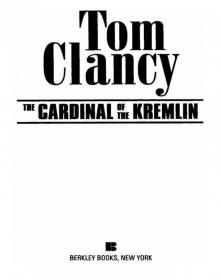 The Cardinal of the Kremlin
The Cardinal of the Kremlin Executive Orders
Executive Orders Lincoln, the unknown
Lincoln, the unknown Threat Vector
Threat Vector The Hunted
The Hunted Shadow Warriors: Inside the Special Forces
Shadow Warriors: Inside the Special Forces End Game
End Game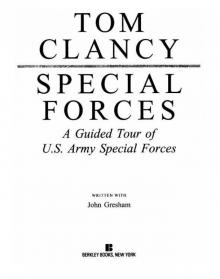 Special Forces: A Guided Tour of U.S. Army Special Forces
Special Forces: A Guided Tour of U.S. Army Special Forces Locked On
Locked On Line of Sight
Line of Sight Tom Clancy Enemy Contact - Mike Maden
Tom Clancy Enemy Contact - Mike Maden Fighter Wing: A Guided Tour of an Air Force Combat Wing
Fighter Wing: A Guided Tour of an Air Force Combat Wing Springboard
Springboard Line of Sight - Mike Maden
Line of Sight - Mike Maden EndWar
EndWar Dead or Alive
Dead or Alive Tom Clancy Support and Defend
Tom Clancy Support and Defend Checkmate
Checkmate Command Authority
Command Authority Carrier: A Guided Tour of an Aircraft Carrier
Carrier: A Guided Tour of an Aircraft Carrier Blacklist Aftermath
Blacklist Aftermath Marine: A Guided Tour of a Marine Expeditionary Unit
Marine: A Guided Tour of a Marine Expeditionary Unit Commander-In-Chief
Commander-In-Chief Armored Cav: A Guided Tour of an Armored Cavalry Regiment
Armored Cav: A Guided Tour of an Armored Cavalry Regiment Tom Clancy's Jack Ryan Books 1-6
Tom Clancy's Jack Ryan Books 1-6 The Ultimate Escape
The Ultimate Escape Airborne: A Guided Tour of an Airborne Task Force
Airborne: A Guided Tour of an Airborne Task Force Debt of Honor
Debt of Honor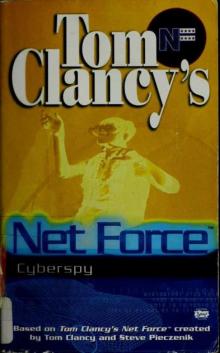 Cyberspy
Cyberspy Point of Contact
Point of Contact Operation Barracuda (2005)
Operation Barracuda (2005) Choke Point
Choke Point Power and Empire
Power and Empire Every Man a Tiger: The Gulf War Air Campaign
Every Man a Tiger: The Gulf War Air Campaign Endgame (1998)
Endgame (1998) EndWar: The Missing
EndWar: The Missing Splinter Cell (2004)
Splinter Cell (2004) The Great Race
The Great Race True Faith and Allegiance
True Faith and Allegiance Deathworld
Deathworld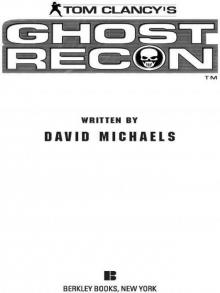 Ghost Recon (2008)
Ghost Recon (2008) Duel Identity
Duel Identity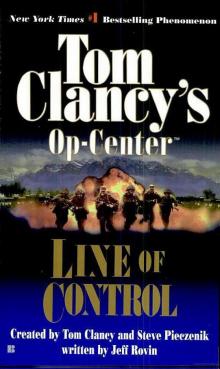 Line of Control o-8
Line of Control o-8 The Hunt for Red October jr-3
The Hunt for Red October jr-3 Hidden Agendas nf-2
Hidden Agendas nf-2 Acts of War oc-4
Acts of War oc-4 Ruthless.Com pp-2
Ruthless.Com pp-2 Night Moves
Night Moves The Hounds of Rome - Mystery of a Fugitive Priest
The Hounds of Rome - Mystery of a Fugitive Priest Into the Storm: On the Ground in Iraq sic-1
Into the Storm: On the Ground in Iraq sic-1 Threat Vector jrj-4
Threat Vector jrj-4 Combat Ops gr-2
Combat Ops gr-2 Virtual Vandals nfe-1
Virtual Vandals nfe-1 Runaways nfe-16
Runaways nfe-16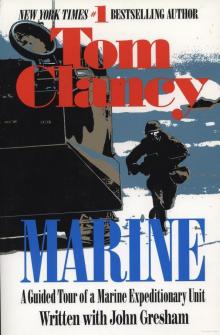 Marine: A Guided Tour of a Marine Expeditionary Unit tcml-4
Marine: A Guided Tour of a Marine Expeditionary Unit tcml-4 Shadow Warriors: Inside the Special Forces sic-3
Shadow Warriors: Inside the Special Forces sic-3 Jack Ryan Books 1-6
Jack Ryan Books 1-6 Cold Case nfe-15
Cold Case nfe-15 Changing of the Guard nf-8
Changing of the Guard nf-8 Splinter Cell sc-1
Splinter Cell sc-1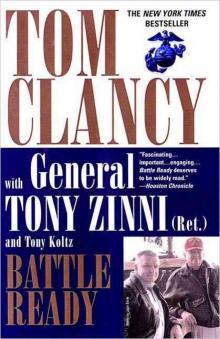 Battle Ready sic-4
Battle Ready sic-4 The Bear and the Dragon jrao-11
The Bear and the Dragon jrao-11 Fighter Wing: A Guided Tour of an Air Force Combat Wing tcml-3
Fighter Wing: A Guided Tour of an Air Force Combat Wing tcml-3 Patriot Games jr-1
Patriot Games jr-1 Jack Ryan Books 7-12
Jack Ryan Books 7-12 Mission of Honor o-9
Mission of Honor o-9 Private Lives nfe-9
Private Lives nfe-9 Operation Barracuda sc-2
Operation Barracuda sc-2 Cold War pp-5
Cold War pp-5 Point of Impact nf-5
Point of Impact nf-5 Red Rabbit jr-9
Red Rabbit jr-9 The Deadliest Game nfe-2
The Deadliest Game nfe-2 Springboard nf-9
Springboard nf-9 Safe House nfe-10
Safe House nfe-10 EndWar e-1
EndWar e-1 Duel Identity nfe-12
Duel Identity nfe-12 Deathworld nfe-13
Deathworld nfe-13 Politika pp-1
Politika pp-1 Rainbow Six jr-9
Rainbow Six jr-9 Tom Clancy's Power Plays 1 - 4
Tom Clancy's Power Plays 1 - 4 Endgame sc-6
Endgame sc-6 Executive Orders jr-7
Executive Orders jr-7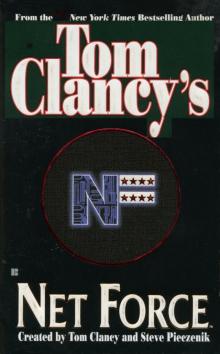 Net Force nf-1
Net Force nf-1 Call to Treason o-11
Call to Treason o-11 Locked On jrj-3
Locked On jrj-3 Against All Enemies
Against All Enemies The Sum of All Fears jr-7
The Sum of All Fears jr-7 Sea of Fire o-10
Sea of Fire o-10 Fallout sc-4
Fallout sc-4 Balance of Power o-5
Balance of Power o-5 Shadow Watch pp-3
Shadow Watch pp-3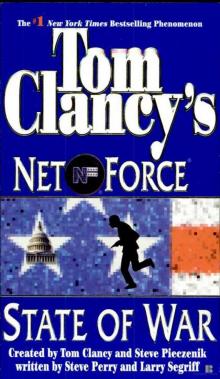 State of War nf-7
State of War nf-7 Wild Card pp-8
Wild Card pp-8 Games of State o-3
Games of State o-3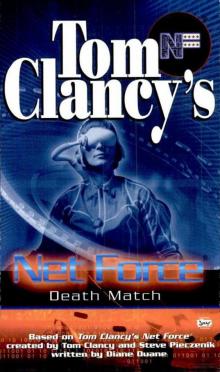 Death Match nfe-18
Death Match nfe-18 Against All Enemies mm-1
Against All Enemies mm-1 Every Man a Tiger: The Gulf War Air Campaign sic-2
Every Man a Tiger: The Gulf War Air Campaign sic-2 Cybernation nf-6
Cybernation nf-6 Support and Defend
Support and Defend Night Moves nf-3
Night Moves nf-3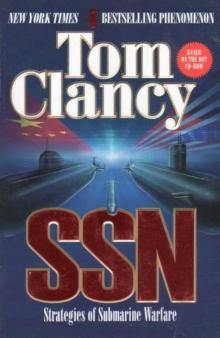 SSN
SSN Cutting Edge pp-6
Cutting Edge pp-6 The Cardinal of the Kremlin jrao-5
The Cardinal of the Kremlin jrao-5 War of Eagles o-12
War of Eagles o-12 Op-Center o-1
Op-Center o-1 Mirror Image o-2
Mirror Image o-2 The Archimedes Effect nf-10
The Archimedes Effect nf-10 Teeth of the Tiger jrj-1
Teeth of the Tiger jrj-1 Bio-Strike pp-4
Bio-Strike pp-4 State of Siege o-6
State of Siege o-6 Debt of Honor jr-6
Debt of Honor jr-6 Zero Hour pp-7
Zero Hour pp-7 Ghost Recon gr-1
Ghost Recon gr-1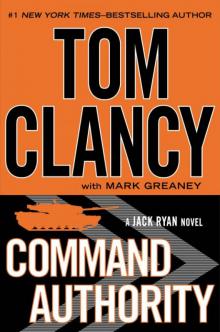 Command Authority jr-10
Command Authority jr-10 Tom Clancy's Power Plays 5 - 8
Tom Clancy's Power Plays 5 - 8 Checkmate sc-3
Checkmate sc-3 Breaking Point nf-4
Breaking Point nf-4 Gameprey nfe-11
Gameprey nfe-11 The Hunted e-2
The Hunted e-2 Hidden Agendas
Hidden Agendas Divide and Conquer o-7
Divide and Conquer o-7